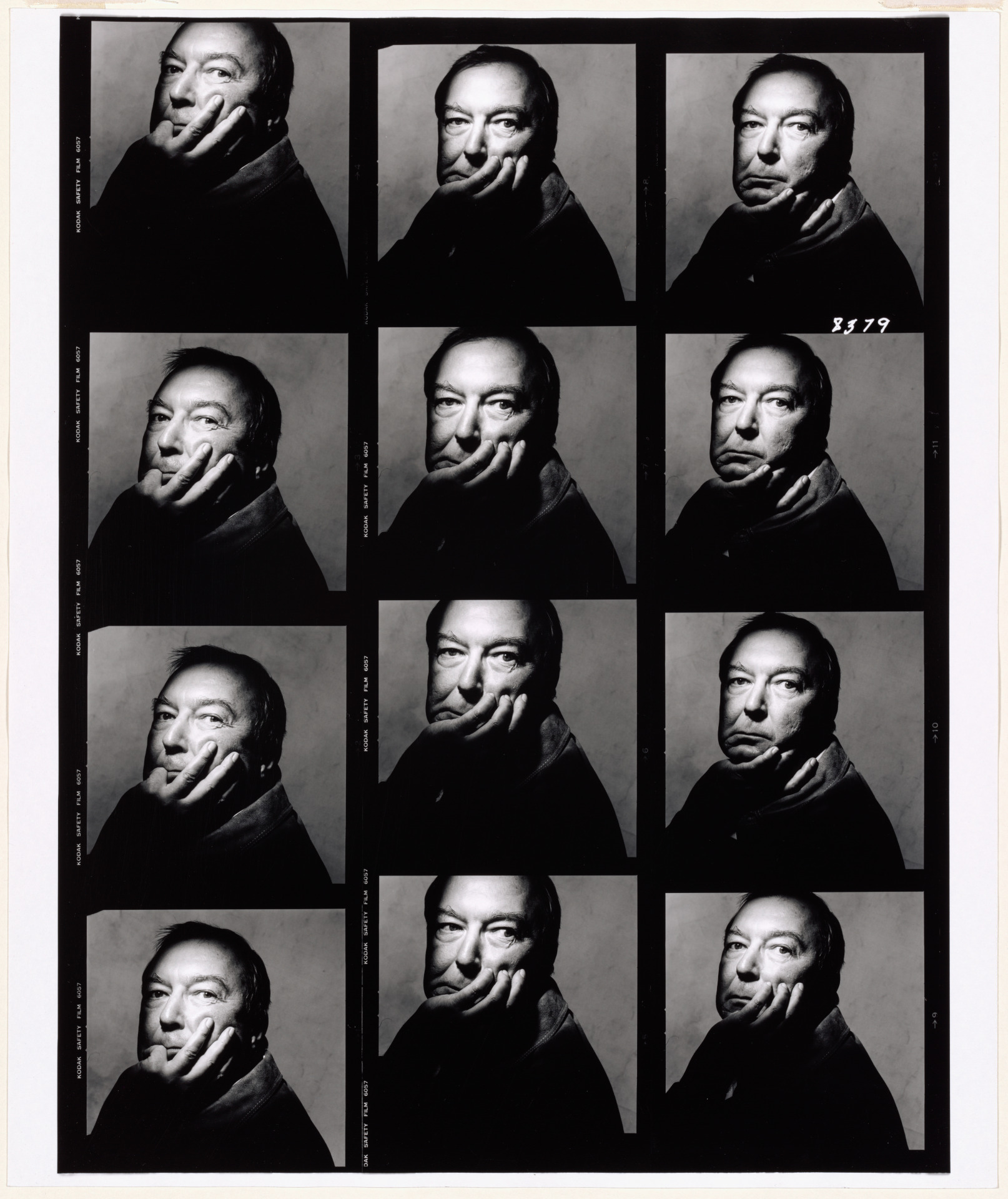- Magazine Article
- Collection
- Exhibitions
Framing the Frames
One contact sheet represents the incredible richness of the group of works from Mark Schwartz's collection recently donated by Tina Katz

Master portraitist Irving Penn is represented in depth in a recent gift from the extraordinary photography collection of Mark Schwartz and Bettina Katz, and his 1983 session with American painter Jasper Johns is one of the more illuminating works.
Twelve stark, bust-length portraits of Johns form the contact sheet from a sitting commissioned by Vanity Fair magazine. A contact sheet displays positive prints of some or all the negatives on a roll of film. It was a 20th-century phenomenon necessitated by roll film, which produced small negatives, and it was rendered obsolete by digital photography.
Penn always tried to go below the surface, to reveal a sitter’s inner essence. In this case, he faced a self-possessed, private person. The magazine’s February 1984 profile was titled “The Inscrutable Jasper Johns,” and the text dubbed Johns the “unsmiling father of Pop art.”
Penn sat Johns in profile, so he had to twist his head to face the camera. The painter’s expression is stony, as befits a man notoriously unforthcoming about his art and personal life—although some of the images hint at a wry, slightly superior smile. His hand supports and sometimes covers part of his face, adding to the sense of reluctance. Penn reinforces that reticence through light and shadow: the painter’s body is a dark silhouette with only his face highlighted.
There are 48 contact sheets and one print by Penn in the Schwartz and Katz gift, and many portray notable 20th-century artists, performers, and writers. Many of these works are in the current exhibition PROOF: Photography in the Era of the Contact Sheet.
The total gift—59 contact sheets and three prints—gives the Cleveland Museum of Art one of the most comprehensive collections of contact sheets in any art museum. Schwartz, who died in 2014, was a CMA trustee, and he and Katz were the naming donors for the museum’s photography gallery. Schwartz was a pioneering, persistent, and persuasive collector of contact sheets, the revealing relics of a creative process that many artists regarded as private. Perhaps this is why the Penn session with Johns is so fascinating: one imagines a tug-of-war between two strong personalities, the photographer seeking and the sitter withholding.
Cleveland Art, Summer 2020